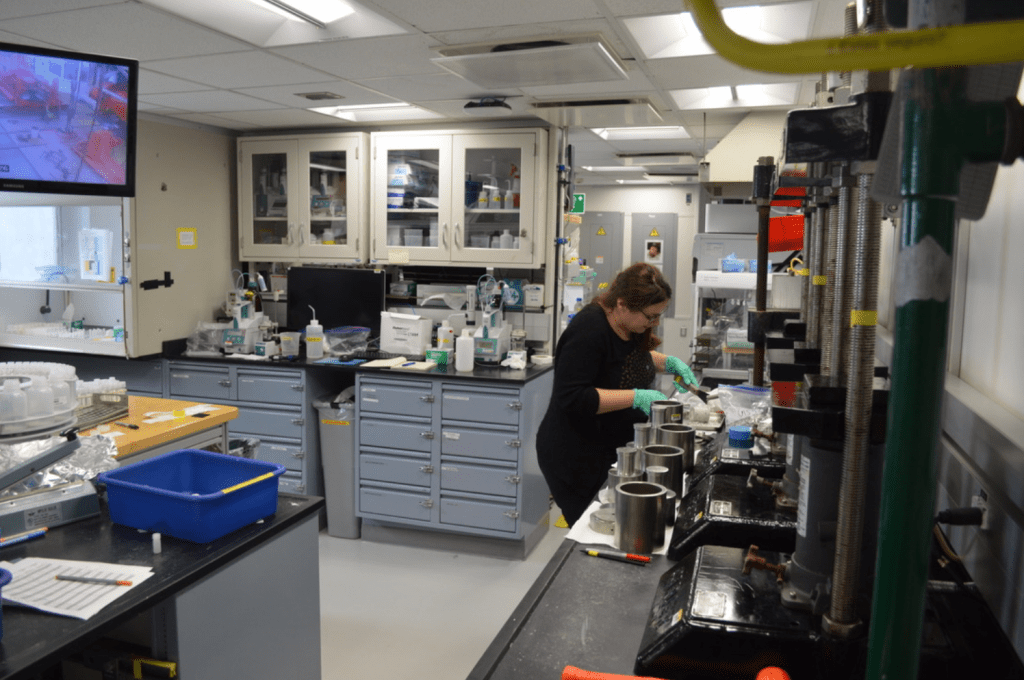
Better Drilling Through Chemistry
This entry is written by Debbie Thomas, co-chief scientist of Expedition 378. It comes from her Expedition 378 Odyssey blog, which can be found here.
Welcome to this special post featuring our night shift chemists (with glimpses of Ann from the day shift, of course)!
Are you ready to finally meet a real squeezecake? Behold….
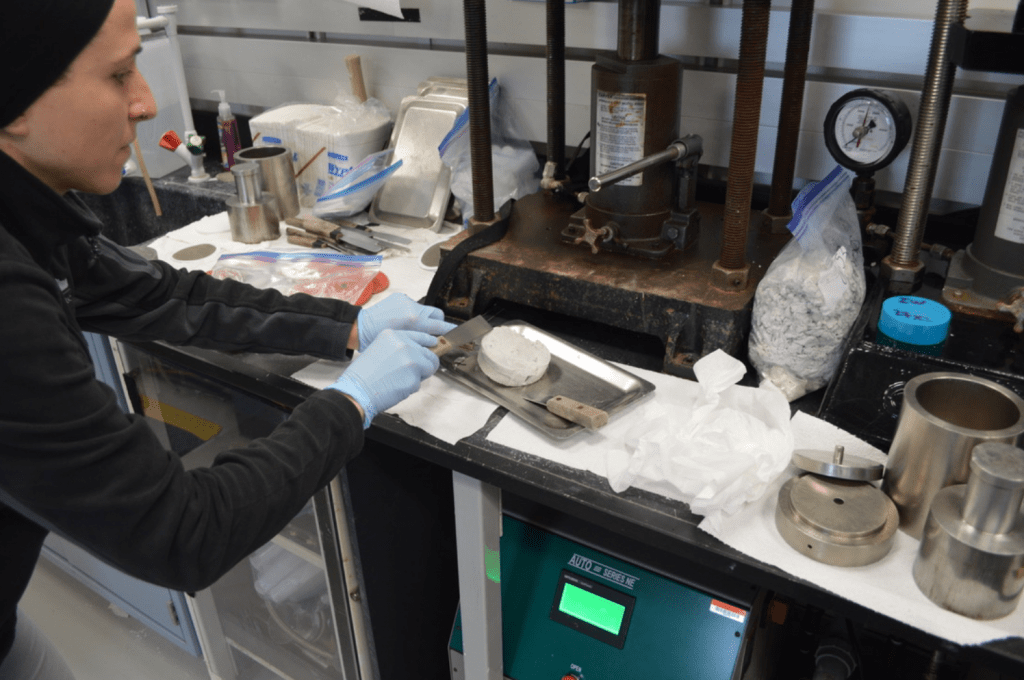
Let’s journey back in time to understand how the squeezecake came to be. Recall the post We finally have CORE!! Now what?!. The shipboard chemists took a whole-round sample on the catwalk designated IW for interstitial water. Interstitial water is the fluid that exists between sediment grains, and we can learn important details about diffusion, biological and geological processes from downhole measurements of these fluids. The IW samples are carried downstairs to the Chem Lab (located on the Fo’c’sle deck) and prepared for loading into the squeezers:
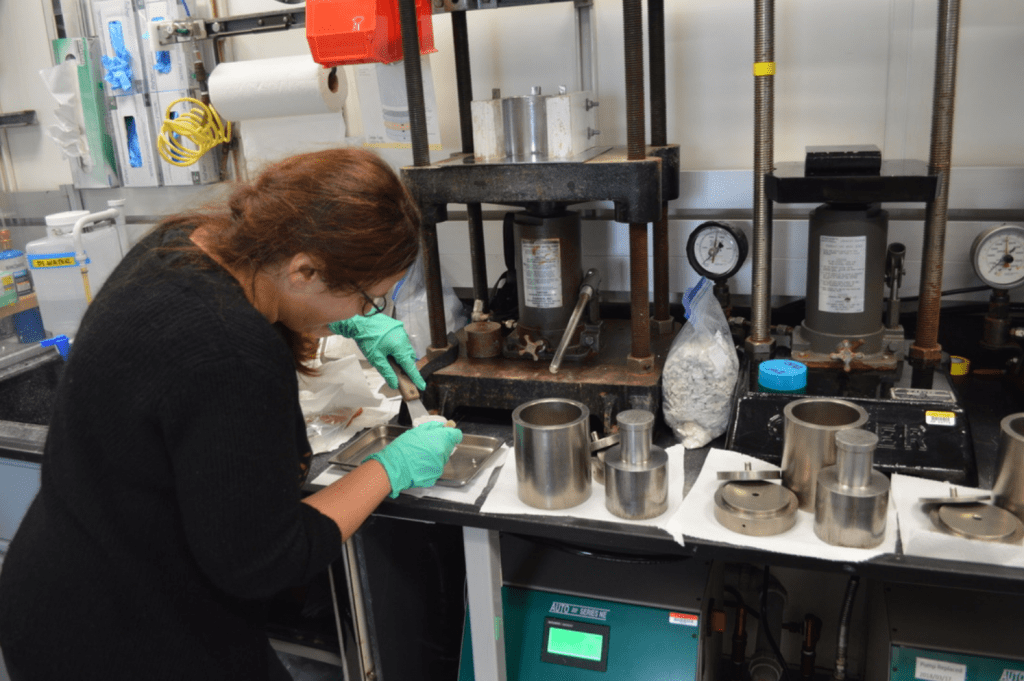

After the squeezer is fully assembled, Eleni lifts it onto the base of the hydraulic press and begins the squeezing very slowly. There is a small hole at the base of the squeezer through which the extruded water will begin to flow. As soon as Eleni (or Blanca or Ann) notices the first drip of water emerging, she inserts the end of the syringe to begin collecting the fluid:
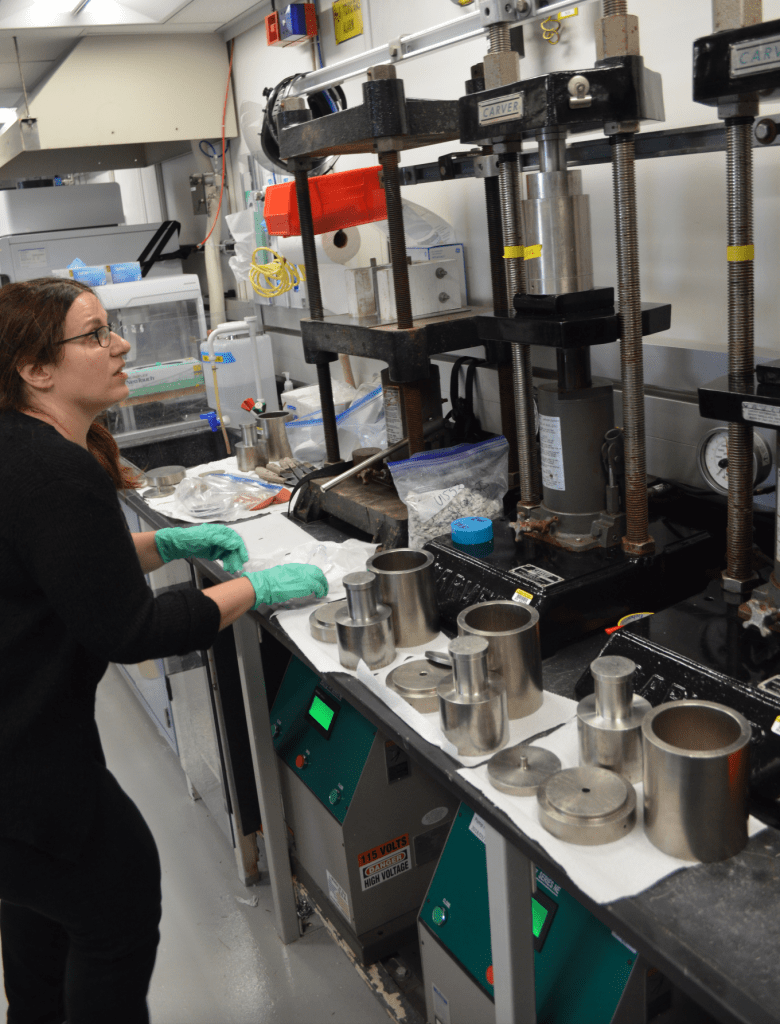

At the other end of the chem lab, Blanca is weighing out dried and pulverized sediment for calcium carbonate analysis on the coulometer. One of the coolest innovations required to perform precise chemistry aboard a rockin’ and rollin’ research vessel is the ability to obtain the mass of the sample on a balance that compensates for the ship’s movement. Characterizing the amount of calcium carbonate in the core samples is one of the critical measurements needed to understand the overall composition and environmental conditions that existed at the time that these sediments were deposited.

Other shipboard chemistry measurements on the pore fluids recovered from the squeezers include pH, alkalinity and sulfate, analyzed using the titrators located behind and to the left of Eleni in the photo below:

You’ll also notice in the upper left corner of the photo the monitor of the rig floor – these are located throughout the labs and offices so that everyone knows the status of drilling and when to expect the next core.
The head space gas samples are analyzed using this gas chromatograph:
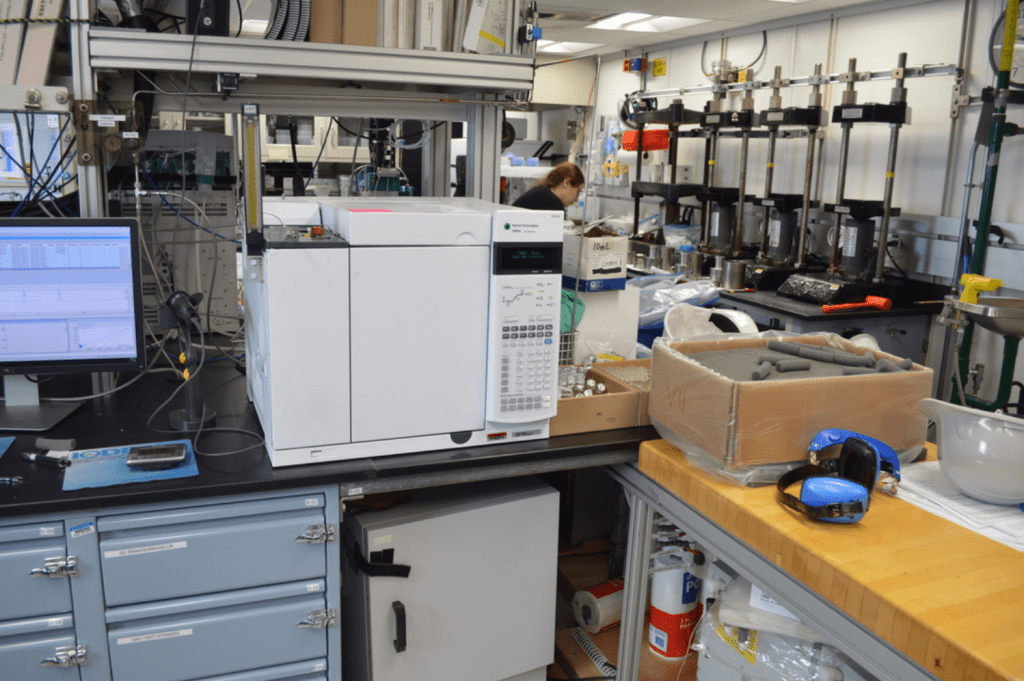
The other type of pore water sampling performed on the cores involves drilling a hole into specified locations of the core sections and inserting a filter “straw,” called a rhizon, directly into the sediment. This enables us to target pore fluids from a narrower thickness of sediments rather than cutting an entire 5cm portion off the core to squeeze. Both strategies have advantages and complement each other in terms of the types of data we can obtain.
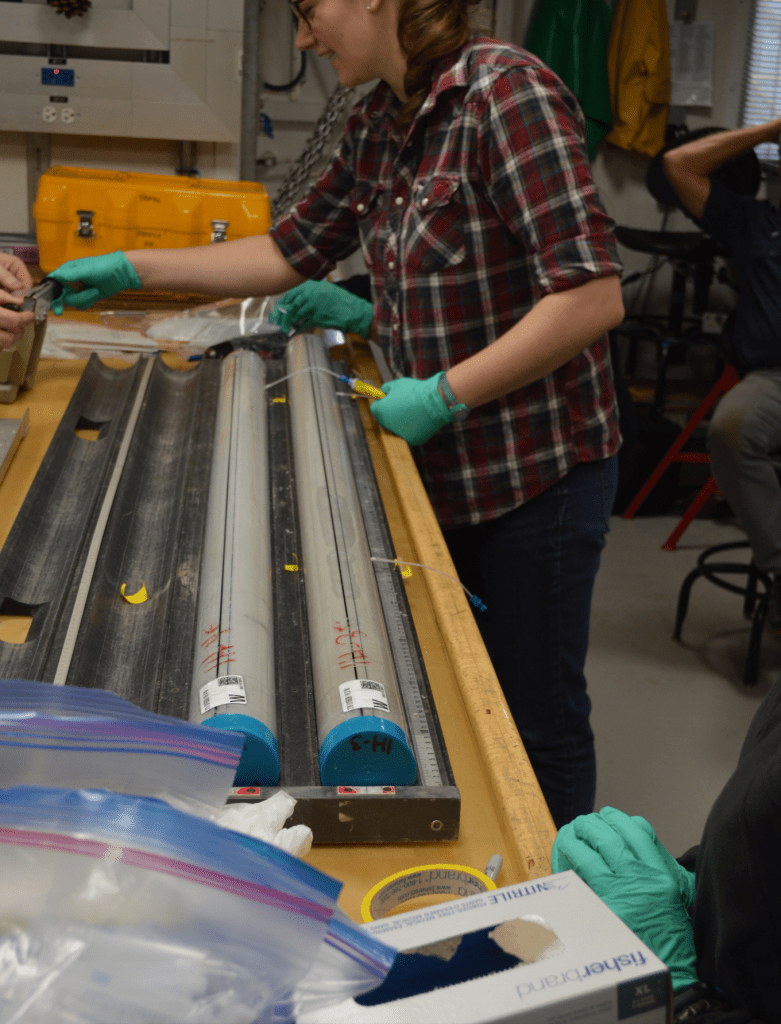



Until the next time,
DT